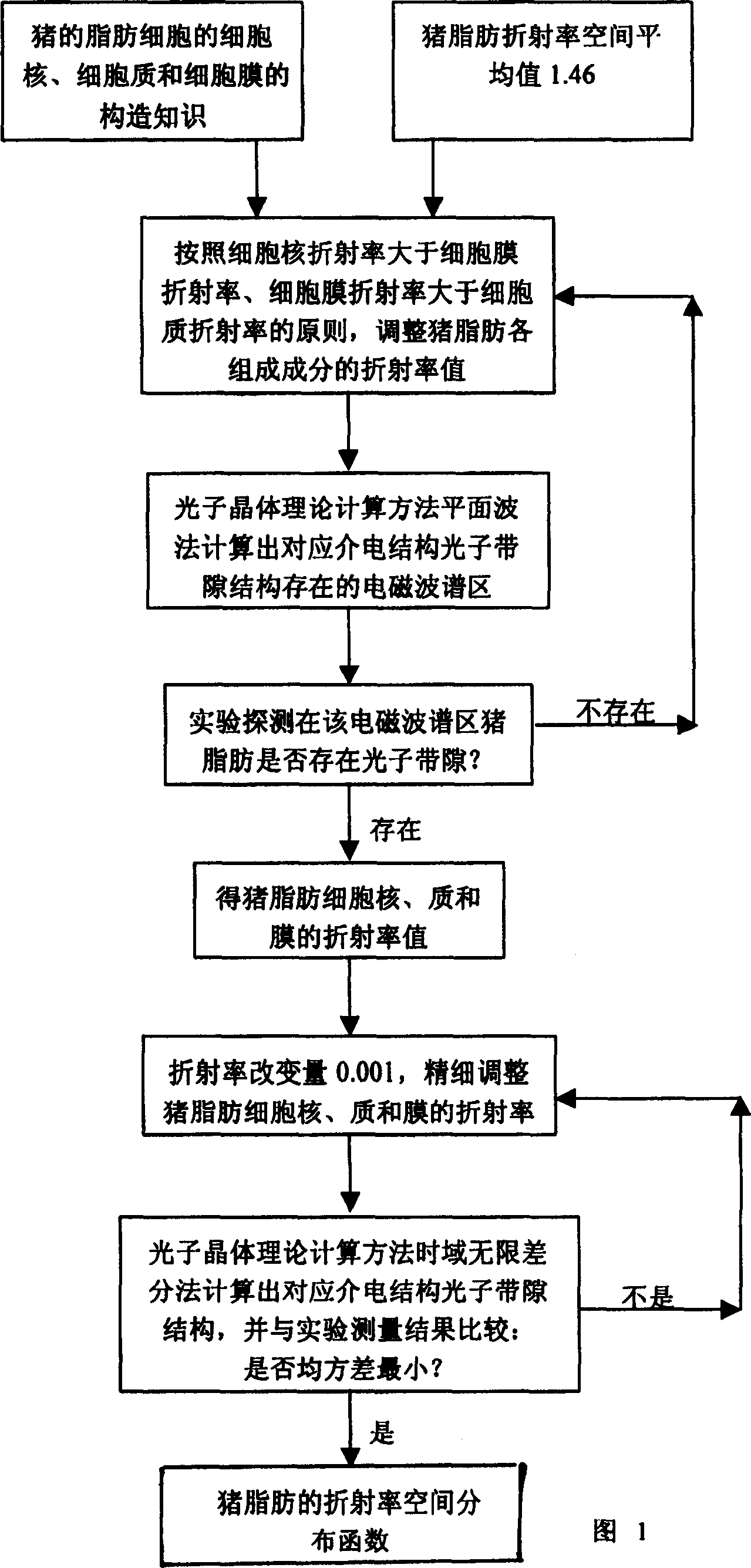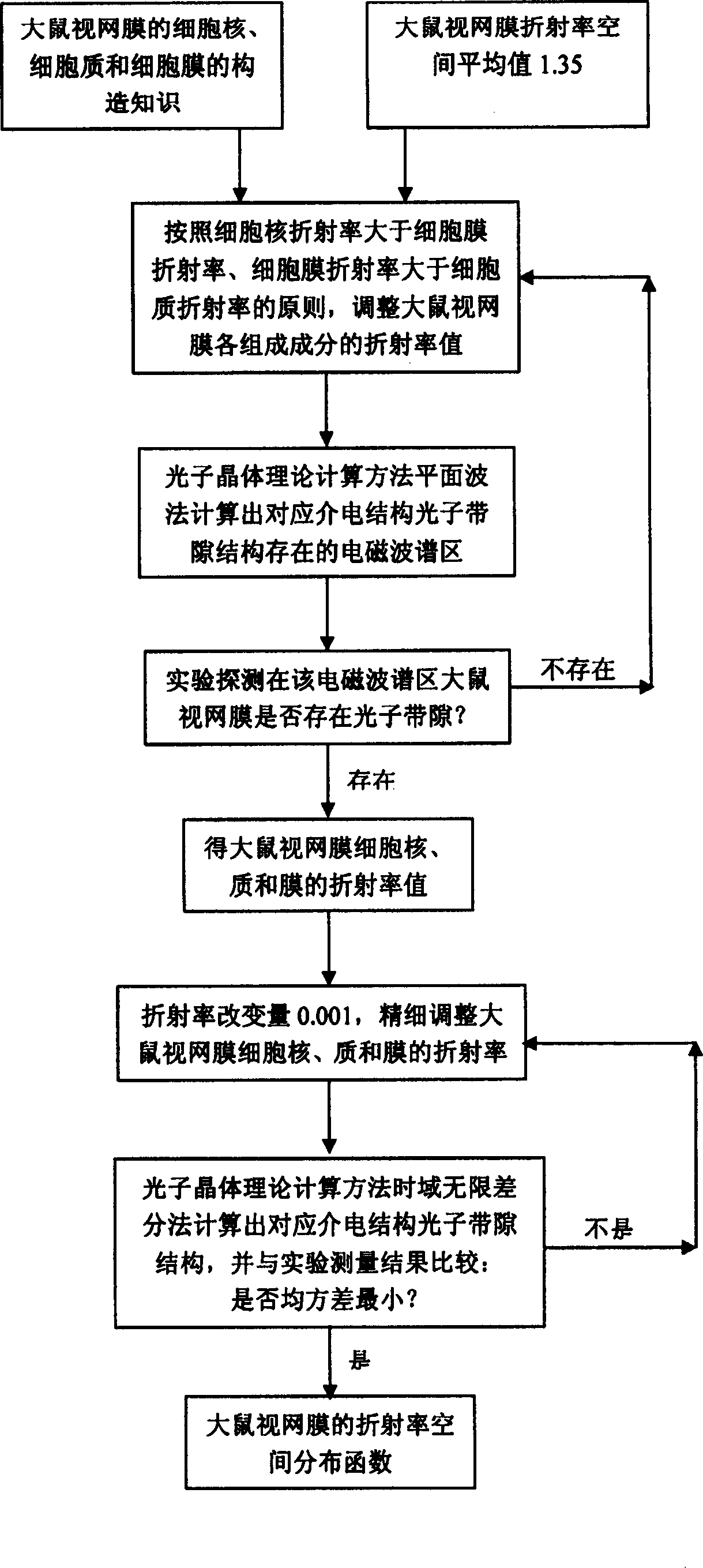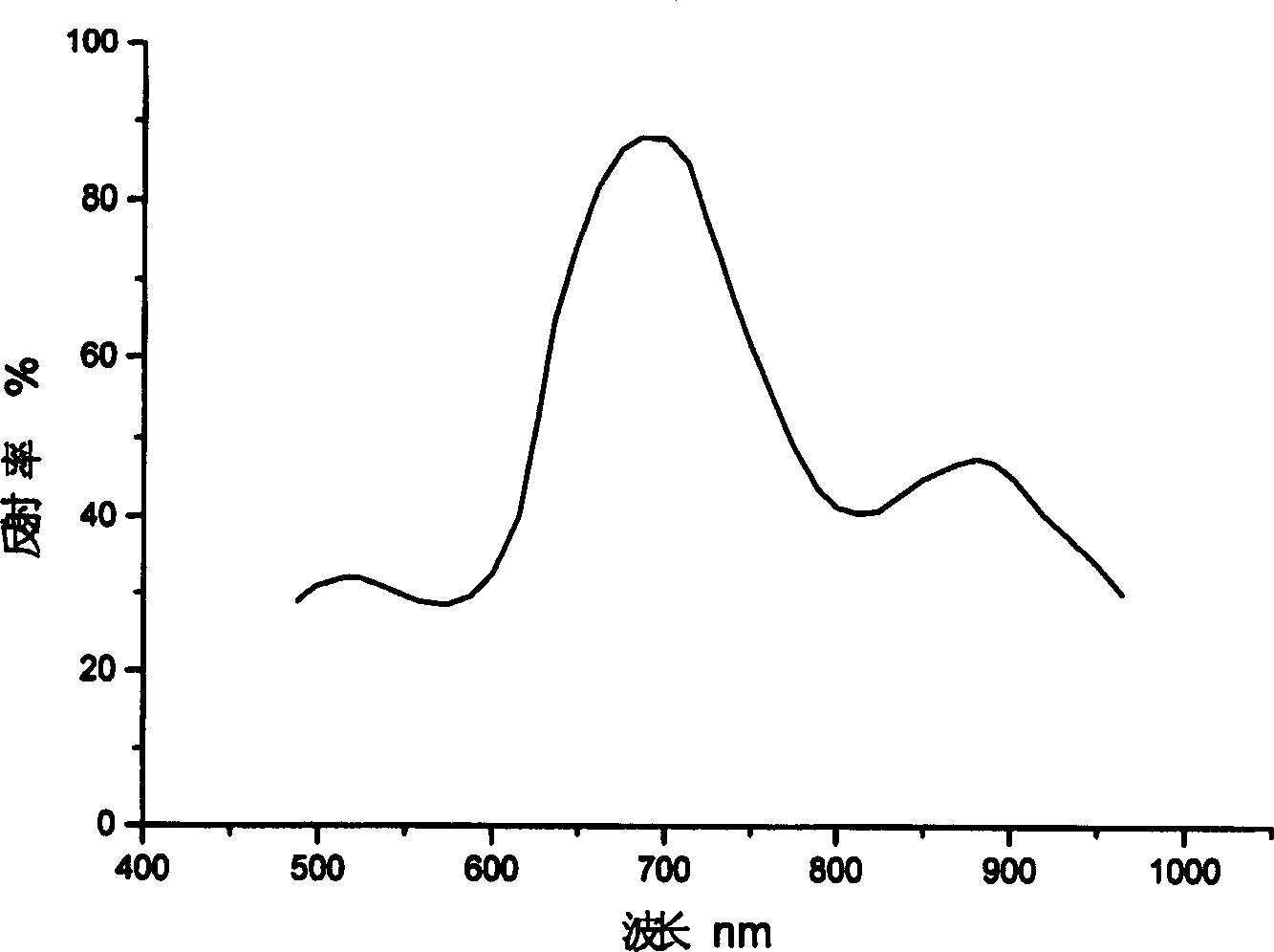Biological tissue refractivity space distribution function detecting method
A technology of spatial distribution function and biological tissue, which is applied in the field of detection of optical parameters of biological tissue, can solve problems such as the difficulty of spatial distribution function of optical transmission parameters and the limitation of measurement accuracy
- Summary
- Abstract
- Description
- Claims
- Application Information
AI Technical Summary
Problems solved by technology
Method used
Image
Examples
Embodiment 1
[0026] Embodiment 1: Embodiment 1 of the method for detecting the spatial distribution function of the refractive index of biological tissue, the flow chart is shown in FIG. 1 .
[0027] Step 1: Determine a biological tissue object as pig fat, according to the tissue structure of the nucleus, cytoplasm and cell membrane of pig fat and the spatial average value of the refractive index of 1.46, according to the structure that the refractive index of the nucleus is greater than the refractive index of the cell membrane, and the refractive index of the cell membrane is greater than the refractive index of the cytoplasm, Adjust the spatial distribution of the refractive index in pig fat, and use the photonic crystal theoretical calculation method to estimate the electromagnetic spectrum region where the photonic bandgap structure of pig fat is located; figure 2 Shown is the result of one of these calculations.
[0028] Step 2: In the electromagnetic spectrum region, use experimenta...
Embodiment 2
[0035] The second embodiment of the method for detecting the spatial distribution function of the refractive index of biological tissue is shown in FIG. 5 .
[0036] Step 1: Determine that a biological tissue object is the retina of a rat. According to the tissue structure of the nucleus, cytoplasm and cell membrane of the rat retina and the spatial average value of the refractive index of 1.35, the refractive index of the nucleus is greater than the refractive index of the cell membrane, and the refractive index of the cell membrane is greater than the refractive index of the cytoplasm Based on the framework, the spatial distribution of the refractive index in the rat retina is adjusted, and several electromagnetic spectrum regions where the photonic bandgap structure of the rat retina is located are estimated by using the photonic crystal theoretical calculation method;
[0037] Step 2: In the electromagnetic spectrum region, use experimental methods including absorption spec...
Embodiment 3
[0044] With the steps of Example 1 or Example 2, the difference is that biological tissues include fat, muscle and connective tissue of mammals or non-mammals, such as fat, muscle and connective tissue of mammalian people or cattle or cats or dogs, such as Fat, muscle and connective tissue of non-mammalian eagles or fish or chickens and crocodiles; knowledge of biological tissue structure is the knowledge of the composition of biological tissues, as well as the knowledge of the geometric dimensions of the nucleus, cytoplasm and cell membrane, and the distance between cells.
PUM
 Login to View More
Login to View More Abstract
Description
Claims
Application Information
 Login to View More
Login to View More - R&D Engineer
- R&D Manager
- IP Professional
- Industry Leading Data Capabilities
- Powerful AI technology
- Patent DNA Extraction
Browse by: Latest US Patents, China's latest patents, Technical Efficacy Thesaurus, Application Domain, Technology Topic, Popular Technical Reports.
© 2024 PatSnap. All rights reserved.Legal|Privacy policy|Modern Slavery Act Transparency Statement|Sitemap|About US| Contact US: help@patsnap.com










